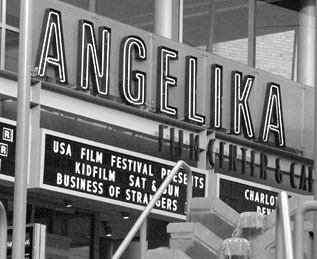
The Margaret Hill Hunt Bridge connected West Dallas to the rest of the city with its opening in March 2012. (Courtesy)
There is a new addition to the Dallas skyline in 2012: the Margaret Hunt Hill Bridge opened its lanes to traffic in March. The architectural elements of the newly minted masterpiece and its meticulous design is evident as one stands beneath the massive structure. As impressive as the new bridge may be, there is more to its history than meets the eye.
The Margaret Hunt Hill Bridge, which stands about the height of the W Hotel, was initiated from a bond that was passed in the late 1990s by then mayor, Ron Kirk, as an effort to connect the city to its suburbs and bridge the gap between the parts of Dallas that the Trinity River had separated for years.
The initiative later became known as the Trinity River Corridor Plan and will eventually involve the construction of multiple bridges, outdoor trails, parks and other public works projects throughout the Trinity River Corridor.
The mastermind behind the Hunt Hill Bridge design is world-renowned Spanish artist, architect and engineer, Santiago Calatrava.
“I was so inspired by him and the elegance and beauty of his designs,” Gail Thomas, the president and executive officer of the Trinity Trust, said. The structure is Calatrava’s first vehicular bridge to be built in the United States and the first steel bridge to cross the Trinity River.
Calatrava is no stranger to Dallas though; his perpetually moving sculpture, “The Wave”, can be seen on the street level of SMU’s campus in front of the Meadows Museum. “The Wave” is another one of Calatrava’s firsts- it is the original large-scale work of his to be permanently installed in the U.S.
Calatrava was commissioned to design the Hunt Hill Bridge and “The Wave” around the same time in 1999, but despite similar beginning dates, the two are not directly related.
“There’s no direct link between the two, but his many ties to SMU (the multiple artworks contained in the Meadows Museum collection, his receipt of the Meadows Award and an honorary doctorate from the university in 2005) have created a positive perception of him among the people of Dallas and perhaps raised his profile among those specifically involved with the bridge,” Carrie Hunnicutt, the marketing and public relations manager for the Meadows Museum, said.
“I think there are always correlations,” Thomas said. “Calatrava had kind of a meteor-like rise in popularity all over the world [at the time of his commissioning]. People were fascinated with his architecture.”
The Hunt Hill Bridge is soon to be joined by a neighboring bridge also designed by Calatrava. It will be named the Margaret McDermott Bridge. What many don’t know is that the two women, while both being philanthropists and having bridges named after them, were also close friends- McDermott actually caught the bouquet at Hunt-Hill’s wedding.
McDermott was the first person to give money to the Hunt-Hill Bridge project. She later donated more funds towards the construction of the bridge that would hold her namesake in the future.
The Hunt Hill Bridge may be less than a year old, but it has already had a great impact on the city of Dallas.
“I think it is a real beacon to bringing the people to the city center. The image of the Margaret Hunt Hill Bridge has become an icon for the city. Like the Eiffel Tower. I think it’s the landmark for Dallas and I think it will be for years to come,” Thomas said.










